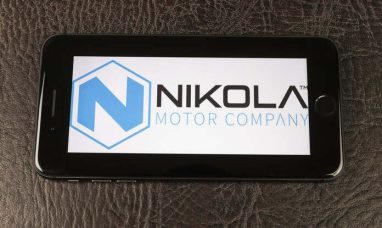The world’s two biggest smartphone makers, Samsung and Apple (NASDAQ:AAPL), are fully embracing generative AI. At Samsung’s latest Galaxy Unpacked event in Paris, the company showcased its new foldable smartphones and highlighted the benefits of its Galaxy AI platform. Meanwhile, Apple’s WWDC event in June focused on how its Apple Intelligence generative AI software will power new features on its iPhones. According to IDC, Samsung and Apple combined made up 36.6% of the global smartphone market in the second quarter of 2024, but their approaches to integrating generative AI in smartphones are vastly different.
Samsung’s Broad Integration Strategy
Samsung aims to quickly build a large user base for its generative AI services, thus incentivizing developers to build apps for its Galaxy AI platform. Samsung’s Galaxy AI features are available on this year’s Galaxy S24, last year’s S23, and 2022’s Galaxy S22, as well as three generations of its foldable phones. Samsung expects to put Galaxy AI on approximately 200 million devices by the end of the year. This broad integration strategy is designed to create a large and active user base, encouraging developers to create more innovative and useful apps.
Apple’s Selective Integration Approach
In contrast, Apple is taking a more selective approach. Only users who own its most powerful devices, the iPhone 15 Pro and iPhone 15 Pro Max, and later iterations will get access to Apple Intelligence features. Apple is banking on this strategy to boost iPhone sales in the near to medium term, encouraging users to upgrade to the latest models to experience the new AI capabilities. This approach aims to create a strong initial demand for its newest devices, leveraging the allure of generative AI to drive sales.
Market Implications and User Adoption
Despite their differing strategies, both companies face the challenge of proving to consumers that generative AI apps are worth the hype. As Ryan Reith, program vice president for IDC’s Mobile Device Tracker suite, explained, “Through 2025, if not a little bit longer, most of the purchasing would be purchasing that would have happened anyway as opposed to people running out because they need AI features.” This indicates that while generative AI might not immediately drive new sales, it is a significant factor for future growth.
Samsung vs. Apple: AI Features and Developer Engagement
Samsung launched its Galaxy AI platform alongside the Galaxy S24 line in January, featuring a variety of Google’s (NASDAQ:GOOG) AI apps. Since then, 77% of S24 users have engaged with its AI capabilities at least once a week. Popular features include Google’s Circle to Search, AI-powered translation, transcription, text composition, and photo editing. Bob O’Donnell, president and chief analyst at TECHnalysis Research, noted, “Samsung is recognizing that they want to get Galaxy AI out there to as many people as they can… They want to get developers excited to create things for their platforms.”
Apple’s focus is more on immediate hardware sales, tying its generative AI features to its latest iPhone models. This selective approach ensures that only users of the newest devices can access Apple Intelligence, which may limit its initial user base but aims to create a high demand for its latest products. This strategy is crucial for Apple, especially after sales declines in 2023 and a mixed start to 2024.
Consumer Understanding and Market Evolution
The success of generative AI in smartphones ultimately depends on consumer understanding and adoption. While Samsung’s early usage numbers are impressive, they indicate only weekly engagement with AI features. Anecdotal evidence suggests that many consumers are still unclear about the benefits of generative AI on their smartphones. This gap in understanding highlights the need for continued education and effective communication from both Samsung and Apple.
Conclusion
Apple and Samsung are charting different paths in the race to integrate generative AI into their smartphones. Samsung’s broad integration aims to quickly build a large user base and attract developers, while Apple’s selective approach focuses on driving sales of its latest devices. As both companies continue to evolve their strategies and messaging, the coming months will reveal how these approaches impact consumer adoption and the broader smartphone market.
Featured Image: Freepik









